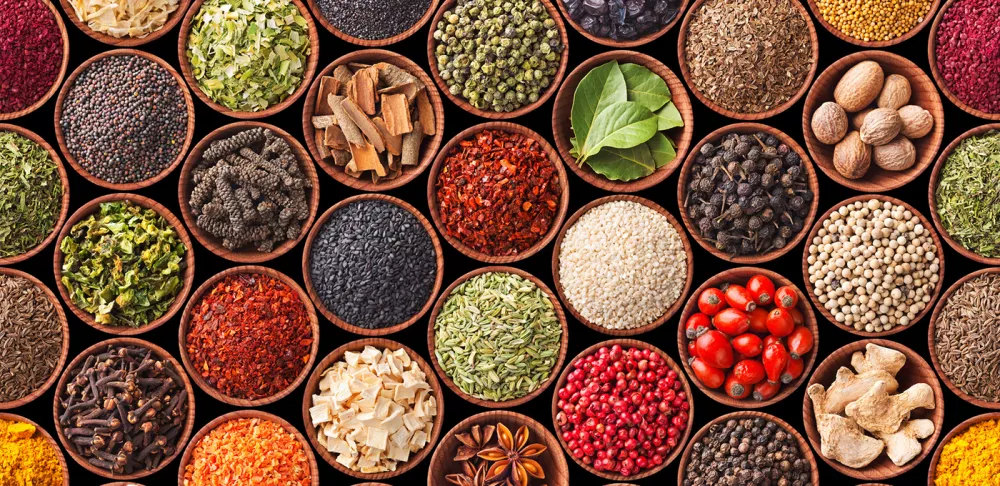Every year the “flavor forecasters” of our industry claim that, “Indian food will be the next breakout cuisine!” I always take notice — being half Indian and the founder of an Indian food company — but sadly, it never pans out. What has panned out, however, is a steady build of interest in and appreciation of the cuisine as it makes its way onto more grocery store shelves and cooking shows and into delivery meal kits. It transforms in exciting ways in the hands of genre-bending second-generation Indian chefs.

My pet theory about why Indian food doesn’t catch fire is because unlike other Asian cuisines, Indian cooking doesn’t rely on sugar for flavor. Take Japanese sushi rice, Thai coconut curries, Korean barbecue, Vietnamese dipping sauces, Chinese hoisin, plum and oyster sauces, the list goes on with savory Asian foods that contain some form of sugar. I’m a huge fan of all these cuisines and I appreciate the way their sweetness amplifies the chili heat and salty-sour tanginess. But it makes me think about why Indian food might be more challenging for the Western palate to embrace.
So, while it may not be “easy love,” Indian food is unique in the world when it comes to spices: we know how to coax out the flavors and we know how to harness the healing properties. Not only are curries deeply flavorful, they’re also healthful. This is where Indian cuisine’s true genius lies. And this is what is finally getting some attention outside of South Asia.
For thousands of years, Indians have been sharing their black pepper, turmeric, ginger and cardamom with the world, taking in exchange cumin, coriander and fennel from the Mediterranean, cinnamon and clove from Indonesia, and chilies from the Americas. Since antiquity, Indians readily absorbed these new ingredients into their cooking, building an increasingly complex formula for flavor over time. A “curry,” as it would be generically named by the British in the 1700s, would usually include sautéed aromatics such as onion, garlic and ginger; a souring agent like tomato, tamarind or dried unripe mango; a thickener, usually coconut if you’re from tropical South India or dairy if you’re from the drier North; and it would easily contain a dozen spices: whole, crushed and ground.
By using various forms of a spice, Indians manage to extract different essences from a single ingredient. Cumin is a perfect example: whole seeds sizzled in oil, dry-toasted seeds, crushed seeds or finely powdered seeds will each provide a different kind of cumin flavor. And for anyone who thinks curry powder has anything to do with Indian food, PLEASE READ THIS: curry powder is not a “thing” for Indian people. Indian cooks create their own blends at home, making a unique mix for each curry. A meat dish is enhanced by coriander, cumin and black pepper; fish often uses fennel and fenugreek; and vegetables lean into cumin, turmeric and cayenne.
As delicious as they are, spices are also “functional foods” and have been long before the phrase became an on-trend marketing tool. Many spices aid in digestion, making beans more digestible and nutrients more easily absorbed. Chilies improve circulation, cardamom removes toxins, ginger relieves nausea, coriander improves cholesterol levels, and the ultimate heavy-hitter turmeric is an antioxidant, anti-inflammatory, antibacterial and potentially reduces risk of Alzheimer’s disease, to name just a few of its properties. In order to activate the benefits, you often need to combine spices. For example, it takes black pepper to unlock turmeric’s magic, and not surprisingly, you’ll frequently find those ingredients paired.
These properties have been well known to Indians for over 5,000 years, which is as old as Ayurveda. Developed in India, Ayurveda is the world’s oldest system of medicine, based on balancing mind, body and spirit. Once you identify your constitutional type or dosha, then food choices can help you harmonize your system. If you tend to be a “cool” type, you might eat warming foods like cumin, black pepper and mustard, and if you’re a “warm” type, you might choose cooling foods like coriander, fennel and cardamom. Ayurveda takes into account the beneficial aspects of spices with the effect they have on each individual.
And just when we thought we understood the medicinal and flavorful qualities of spices in Indian cooking, researchers at the Indian Institute for Technology in Jodhpur recently discovered something fascinating about Indian food on the cellular level. They found that unlike in Western cuisines, Indian ingredients are made up of chemical compounds that don’t share similar flavor traits. This is diametrically opposed to Western cooking and its foundation of overlapping flavors. Examples of this overlap include butter and cream, or wine and cheese. The finding has been hailed as proof of what makes Indian cooking so delicious, but it could also be contributing to why Americans are slow to warm up to it. I think it’s part of the genius.
So, while Indian cuisine may never rise to a “hot trend” among American foodies, the rewards of eating it are there on so many levels. At the heart of Indian food is a beautiful alchemy that’s mastered by Indian chefs and home cooks alike, and a universe of spices that excite our taste buds, nourish our cells and satisfy our souls.
Hear from food entrepreneurs like Maya at ICE’s Meet the Culinary Entrepreneurs series and learn more about starting a food business in our Restaurant & Culinary Management program.


